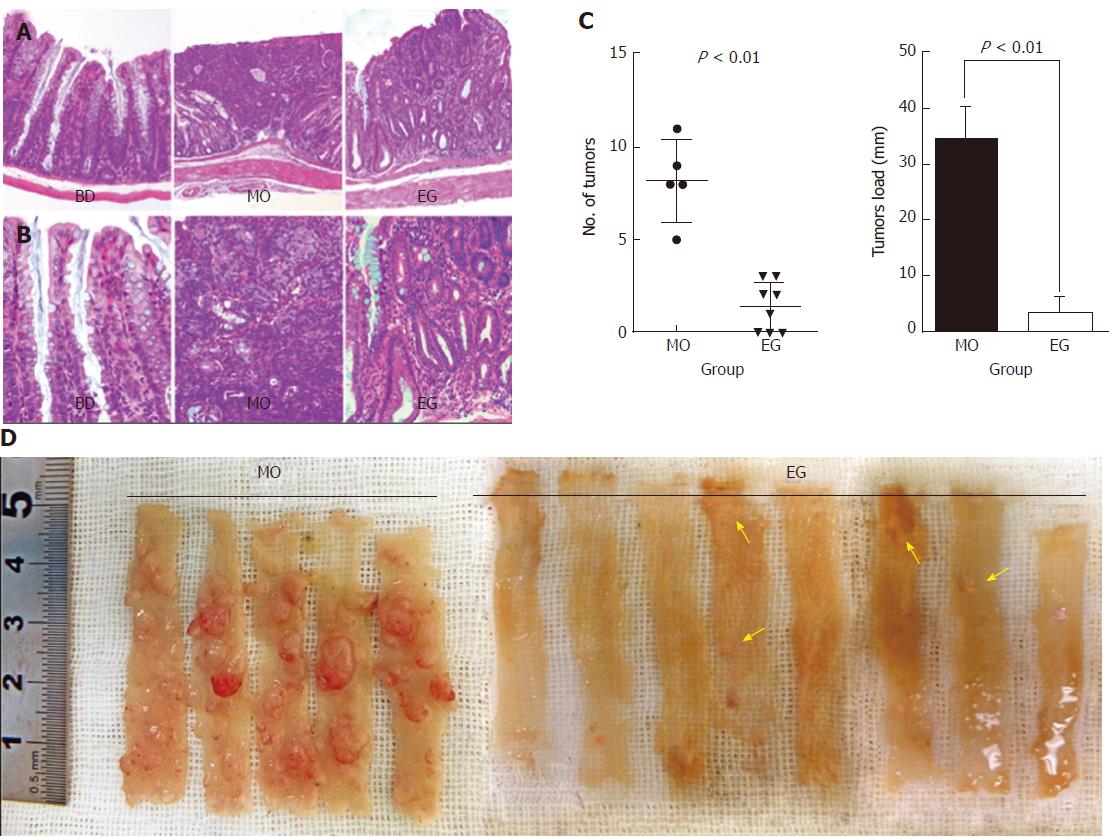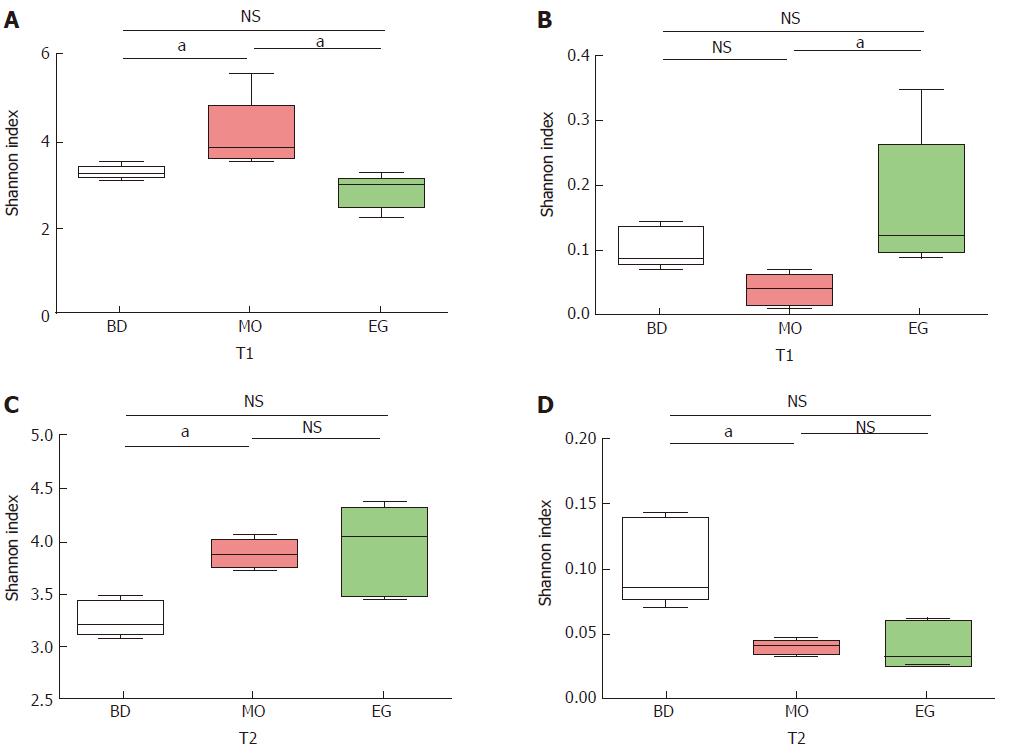Copyright
©The Author(s) 2017.
World J Gastroenterol. Dec 14, 2017; 23(46): 8128-8139
Published online Dec 14, 2017. doi: 10.3748/wjg.v23.i46.8128
Published online Dec 14, 2017. doi: 10.3748/wjg.v23.i46.8128
Figure 1 Experimental protocol.
Experimental FVB /N mice were divided into three groups, i.e., control group, model group, and epigallocatechin gallate treatment group. Animals in the model and EG groups initially received a single intraperitoneal injection of azoxymethane (AOM: 10 mg/kg). After the AOM administration, mice in the model and EG groups received 2.5% dextran sodium sulfate (DSS) in drinking water for 3 consecutive days. Mice in the EG group also received oral 1% EGCG 20 mg/kg per day for 13 wk. AOM: Azoxymethane; EGCG: Epigallocatechin gallate.
Figure 2 Body weight gain of azoxymethane/dextran sulfate sodium-treated female FVB/N mice.
Figure 3 Chemo-preventive effect of epigallocatechin gallate on colorectal carcinogenesis in azoxymethane/dextran sulfate sodium-treated mice.
A and B: Representative hematoxylin and eosin stained histological sections of the control, model, and EG groups. A: × 10; B:× 40; C: Number of colon tumors and tumor load were reduced very significantly in the epigallocatechin gallate (EGCG) group compared to the model group (P < 0.01 and P < 0.001, respectively); D: Representative macroscopic morphology of colon tumors in the model and EG groups. Arrows indicate the azoxymethane/dextran sodium sulfate-induced tumors.
Figure 4 Comparative analysis of alpha diversity at T1 and T2 at the 8th and 13th week.
aP < 0.05.
Figure 5 Statistical analysis for 16 genera (families) at T1 (aP < 0.
05, NS means no significant differences).
Figure 6 Statistical analysis for Lactobacilli and Bifidobacterium (family) at T2 (aP < 0.
05, NS means no significant differences).
- Citation: Wang X, Ye T, Chen WJ, Lv Y, Hao Z, Chen J, Zhao JY, Wang HP, Cai YK. Structural shift of gut microbiota during chemo-preventive effects of epigallocatechin gallate on colorectal carcinogenesis in mice. World J Gastroenterol 2017; 23(46): 8128-8139
- URL: https://www.wjgnet.com/1007-9327/full/v23/i46/8128.htm
- DOI: https://dx.doi.org/10.3748/wjg.v23.i46.8128














